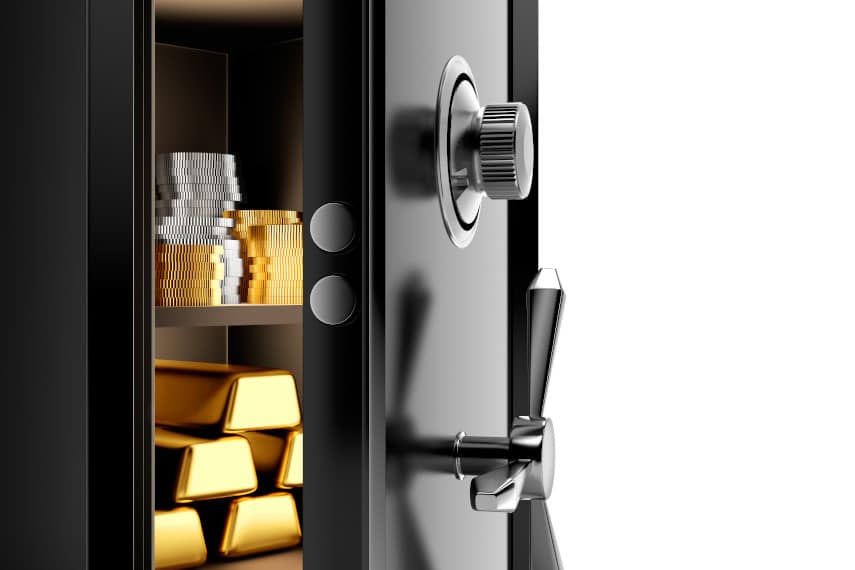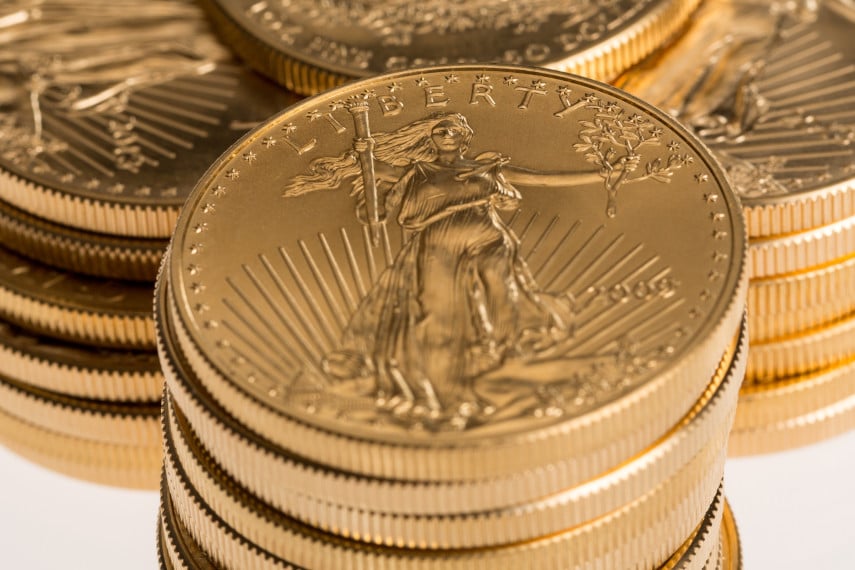
With the US economy officially in recession, several states pausing or rolling back reopening, and uncertainty about the future roiling markets, investors across the country are nervously watching their investments. Many investors are eyeing precious metals, watching as gold and silver continue to gain in price. But, like so many people out there, they have questions about precious metals investing.
Precious metals markets, like any other market, aren’t static. New developments occur every year, with new companies offering innovative products to help people invest in precious metals.
If you have never invested in precious metals before, or even if you have experience with precious metals investing in years past, you may want to learn more about your precious metals investing options. Here are five of the top questions that most investors have about precious metals investing.
1. What’s Better to Invest In: Gold or Silver?
The first question most investors have about precious metals is: should I invest in gold or silver? It’s important to remember that gold and silver have their own advantages and disadvantages. And don’t forget that there are actually four precious metals that can be invested in: gold, silver, platinum, and palladium.
Ultimately, your decision to invest in gold or silver will depend on which metal better suits your investment needs. And many investors decide to invest in both gold and silver.
Why invest in gold? It has the advantage of long-term price stability and unparalleled wealth protection. Silver has the advantage of higher potential gains, for example quadrupling in price after 2008 while gold only tripled in price.
Some investors like the feeling of getting something for their money when they buy silver. $50,000 in gold can fit into your pocket. But $50,000 in silver will fill several Priority Mail shipping boxes. The sheer amount of silver can make some investors feel rich.
But other investors like the ability to store huge amounts of wealth in a compact package, thus they choose gold. At the end of the day, your decision to allocate your investments to gold or silver is a personal one. You’ll have to weigh the various advantages or disadvantages of gold or silver and determine what’s right for your precious metals investing needs.
2. What’s the Best Way to Invest in Precious Metals?
There are numerous ways to invest in precious metals, but the one thing to remember is that investing in physical gold is almost always superior to investing in paper gold. When it comes to paper gold vs. physical gold, the advantage of actually being able to take delivery of physical gold coins or bars is enormous.
When we say paper gold, we mean investing in things like gold exchange-traded funds (ETFs), shares of gold mining stocks, etc. You’re not actually investing in gold, but rather in shares of funds or companies that either hold gold or produce gold. The value of those shares may rise or fall along with the gold price, but it’s not an investment in actual gold. Nor can you actually take delivery of any gold, not even from an ETF that supposedly issues shares against gold holdings.
Contrast that to investing in physical gold, particularly investing in a gold IRA, a method that is becoming more and more popular. With a gold IRA, investors own actual physical gold coins that are stored with a custodian, while still enjoying the same tax advantages as a conventional IRA. And when it comes time to take a distribution, investors can elect either to receive cash or to take possession of their gold coins or bars.
Investors also have the option of a Roth gold IRA, which operates just like a conventional Roth IRA, allowing investors to invest after-tax dollars, accrue gains tax-free, and take distributions tax-free. The only difference is that a Roth gold IRA invests in physical gold coins or bars. When it comes to precious metals investing, if you can’t take delivery of your precious metals investments at some point in the process, you’re not really investing in precious metals, just paper investments.
3. Should I Invest In Coins or Bars?
The choice of investing in coins or bars really comes down to two things:
- Personal taste;
- Resale potential.
It’s safe to say that most investors want to invest in coins. Gold and silver have been used to produce coins for nearly 3,000 years and the history there is undeniable. Precious metal coins are available in numerous different sizes, with dozens of different designs, and there’s something for everyone.
And because gold coins are readily identifiable and widely sold, more investors are familiar with them, making them easier to resell should you decide to divest yourself of your holdings in the future.
Gold bars often have the benefit of having slightly lower premiums, as investor demand for them isn’t normally as great as it is for coins. But that means that resale value is generally slightly lower than coins when it comes time for you to sell your coins if you want a cash distribution.
Gold coins and bars are also available in different sizes, which can make it difficult to quickly calculate the value of bars. Coins are generally minted in troy ounce sizes, such as one ounce, half ounce, quarter ounce, and tenth ounce sizes. Bars are very often produced in grams, such as one gram, 10-gram, 20-gram, 30-gram, 50-gram, and 100-gram sizes. There are 31.103 grams to one troy ounce.
If you’re looking to find the metal value of a coin, you can easily look at the gold spot price, divide by 2, 4, or 10 and find what the premium is on the coin. Dividing 10 by 31.103 to find the metal value and premium on a 10-gram bar is a lot more difficult. But as you can guess, gram-denominated bars are very popular in Europe and Asia, while troy ounce-denominated coins dominate the market in the US.
Silver coins and silver bars are much the same as gold coins and bars, although their sizes can often be much larger. That’s because the gold to silver price ratio is such that a 100-ounce silver bar often costs about the same as a one-ounce gold coin. With numerous choices, there’s something out there for everyone looking to invest in silver. BU whether you’re looking to invest in gold or silver, learn how to invest in precious metals from the experts.
4. Are My Investments Safe?
Your investments in precious metals are as safe as you want them to be. If you’re just buying coins from a coin store, you may store them at home, where they’re at risk of theft. You could open up a safe deposit box at a bank, but that’s a significant cost that doesn’t make sense for small amounts of precious metals, and still puts you at risk if the bank shuts down or if there is a sudden bank holiday.
With a gold IRA, your precious metals investments are stored with a custodian, just as any other IRA asset is. But gold IRA custodians specialize in storing precious metals, and have secure vaults set up to keep your precious metals safe. They also carry insurance to ensure that, in the very unlikely event that some metals get stolen or destroyed by an act of God, your investments will be made whole.
It’s up to you to determine how safe your precious metal investments are stored, keeping in mind that the more security you choose, the higher the annual cost will be.
5. How Liquid Are My Precious Metals Investments?
The liquidity of your precious metals investments will depend on what form of precious metals you invest in, but in general, gold and silver are highly liquid. Gold and silver are traded 24/7 around the world, and investor markets for coins and bars are highly active. You will always be able to find a willing buyer for your precious metal investments.
Today, investor demand for gold and silver is so high that many investors can’t find enough coins. Some mints around the world had to shut down operations temporarily as a result of their workforces contracting COVID-19, which has had the effect of further spurring demand. Everyone wants to get their hands on gold and silver coins while they still can, and before prices rise any further.
And remember, if you invest in a precious metals IRA, when you decide to take a distribution you can take possession of your precious metals. Aside from potentially having to sell a portion of your assets to cover any taxes you may owe, that means that you won’t necessarily have to worry about liquidating a huge portion of your precious metals.
Still Have Questions?
If you still have questions about precious metals investing, contact the experts at Goldco to learn more. With years of experience helping thousands of investors like you benefit from adding precious metals to their investment portfolios, there’s not a question Goldco’s representatives haven’t heard before. And with their devotion to customer service, they’ll ensure that your journey into precious metals investing is as smooth as possible.






